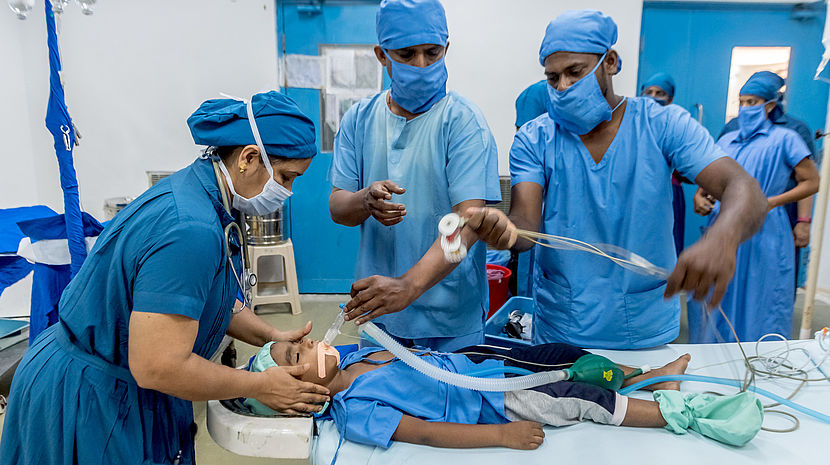CBM Celebrates Important Eye Resolution passed by United Nations

5-year-old Pardhu was born with bilateral cataracts and then developed glaucoma. Here he is being guided by Dr. Asha Joseph (left), pediatric anesthesiologist. His operation was supported by our partner in India - the Sankar Foundation.
© CBM/argum/Einberger
The United Nations General Assembly (UNGA) has today, 23 July, adopted a Resolution committing the international community to eye care for the 1.1 billion people living with preventable sight loss by 2030.
Sight loss is calculated to cost the global economy $411bn in productivity each year.
The resolution is the first agreement designed to tackle preventable sight loss to be adopted by the United Nations and enshrines eye health as part of the United Nations’ Sustainable Development Goals (SDGs).
The resolution was passed unanimously by all 193 countries of the United Nations. It sets a target for vision for everyone by 2030, with countries set to ensure full access to eye care services for their populations, and to make eye health part of their nation’s journey to achieving the SDGs.
The resolution creates new expectations for international financial institutions and donors to provide targeted finances, especially to support developing countries in tackling preventable sight loss. It also calls for new targets on eye care to be included in the SDGs at its next review.
The plan will mean that by 2030, the 1.1 billion people globally living with sight loss, will have access to support and treatment. But, campaigners say, only if governments and international institutions act now to fulfil their new commitments.
The agreement reinforces the idea that countries cannot hope to meet their sustainable development goals unless they take on board the detrimental economic and social impact of ignoring eye care. Ageing populations and changes in lifestyle mean that if action isn’t taken now, almost half the global population will be left dealing with eye problems.
Eye care in all its forms, from medical and surgical interventions, to support and rehabilitation for those who have lost their sight, makes a difference quite out of proportion to the cost of the intervention, not least in the lives of those who benefit. It can make the difference between getting an education or not. The difference between being able to work to feed your family, or not. Although inadequate and expensive eye cares services is a global issue, people in low- and middle-income countries bear a disproportionate burden.
CBM’s contribution
The resolution came about after years of endeavour by the IAPB and the United Nations Friends of Vision Group. CBM has played a part in lobbying for the resolution and using its 100 years of experience in the eye health sector to inform and demonstrate change.
This has been a long time coming, but it arrives at a moment when countries and governments are beginning to understand just how important effective, inclusive, eye care is. There is still a lot of work to be done until such a time when we can truly say that all who need it can access help, but this is a great jump start. It’s now up to everyone- governments, financial institutions and individuals to bring this agreement to life. I commend the IAPB and The Friends of Vision Group for their tenacity and congratulate them on this achievement.Dr. Babar Qureshi, CBM’s Director of Inclusive Eye Health
At CBM this resolution gives us a stronger mandate in the design and implementation of our programmes to ensure that eye health is integrated into national health systems, which is the approach CBM’s Inclusive Eye Health Initiative adopted in 2017. It opens the door for more advocacy in the countries in which we work to enshrine eye care into policies and services. Because of the resolution, decision makers can now be called to account if they do not work to the very best of their ability to meet our collective goal of eye care for everyone by 2030.